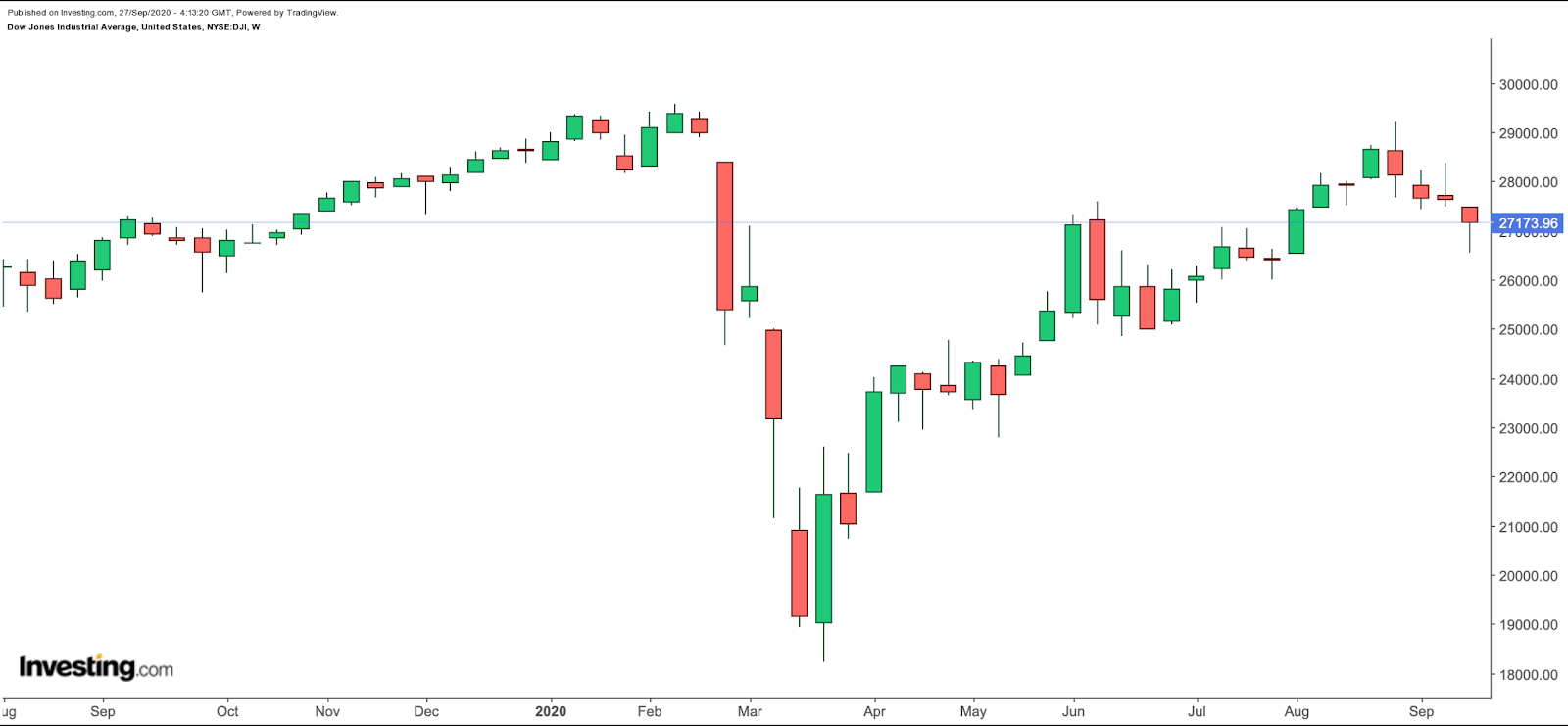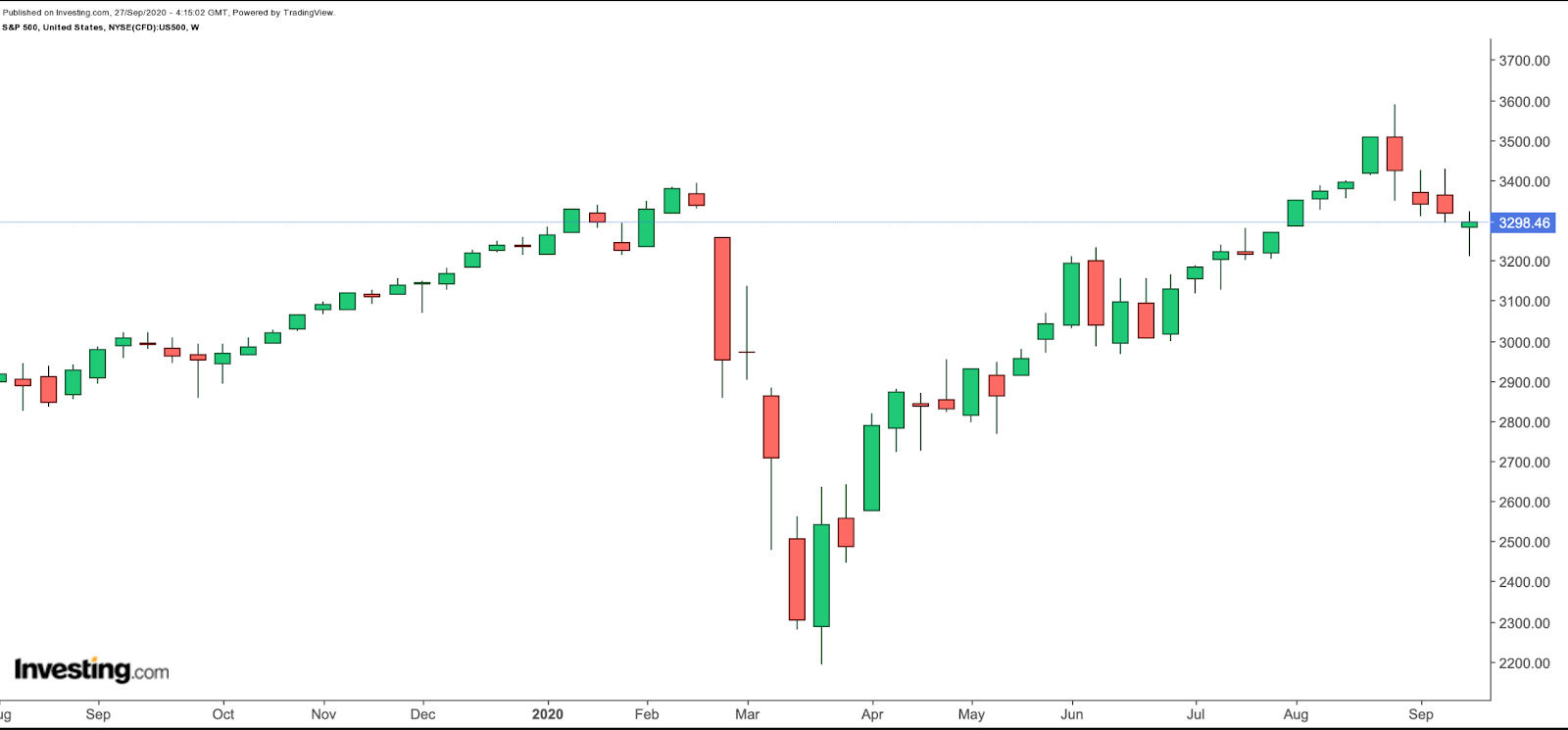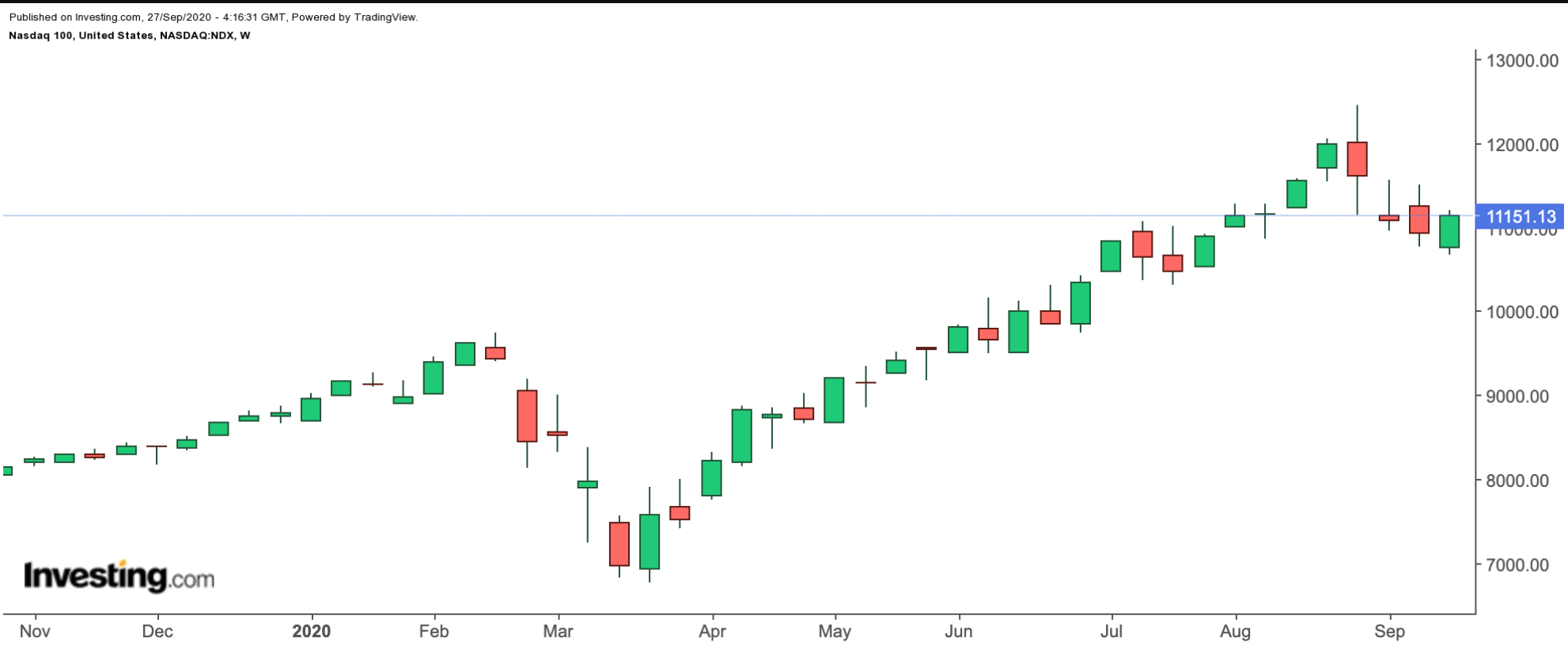September has so far brought volatility and downward pressure to broader equity markets. Market participants are debating whether there will be another market crash or even a ‘bear market.’
A bear market occurs when asset prices fall at least 20% from recent highs, according to the Securities And Exchange Commission. Pessimism or even panic typically accompany bear markets.
On the other hand, a correction is when the decline is around 10%. Obviously, it is impossible to know if a correction will lead to a bear market.
Whatever the terminology, rapid declines can be nerve-racking. So today, we’ll look an ETF that may be appropriate for portfolio diversification if we have a prolonged or more extensive downturn.
How Much Broader Markets Are Down
It is possible to talk about a bear market in indices, sectors, asset classes, or even individual stocks when price declines are steep enough. Yet, most people measure a bear market by moves in an index.
For example, on Sept. 3, the Dow Jones Industrial Average had an intraday high of 29,199.35 (Investing.com readers may remember that the DJIA had seen an all-time high of 29,551.42 on Feb. 12, 2020). Last week, it closed at 27,173.96, a decline of almost 7% since Sept. 3. DJIAWe can see a similar picture in the S&P 500. It closed at a record high of 3580.84 after hitting an intra-day high of 3588.11. It is currently at 3,298.46. Since the all-time high at the start of the month, the index is down about 8%.
DJIAWe can see a similar picture in the S&P 500. It closed at a record high of 3580.84 after hitting an intra-day high of 3588.11. It is currently at 3,298.46. Since the all-time high at the start of the month, the index is down about 8%. SP500How about the NASDAQ index, which tracks the 100 largest non-financial stocks listed on the NASDAQ exchange? On Sept. 2, it also hit an all-time intraday high of 12,439.48. But on Sept. 25, it closed at 11,151.13, down over 10%. Put another way, the tech-heavy index has suffered the most among the three indices and is in correction territory.
SP500How about the NASDAQ index, which tracks the 100 largest non-financial stocks listed on the NASDAQ exchange? On Sept. 2, it also hit an all-time intraday high of 12,439.48. But on Sept. 25, it closed at 11,151.13, down over 10%. Put another way, the tech-heavy index has suffered the most among the three indices and is in correction territory. NASDAQ 100
NASDAQ 100
These declines since the recent highs do not yet show a bear market. However, in the coming weeks, there may be increased risks for investors.
First of all, another earnings season is upon us. We expected companies to be candid about the outlook for the rest of the year. For example, an unexpected profit warning by a stalwart could be enough to unnerve the markets.
Investors’ sentiment could also be dented in the short-term by an increase in COVID-19 numbers worldwide, developments on the vaccine front or economic metrics releases. Furthermore, US consumers and businesses have been hoping for another stimulus package to help the economy shift gears. But it has not yet happened.
Finally, any potential delay in announcing a winner in the upcoming US Presidential election would spook the markets. Thus, in the final quarter of the year, there several possible events which could see markets decline by double digits quickly.
Go With The Consumer
Market moves hardly ever repeat themselves. Each bear market is different. Yet, in general, bear markets tend to be shorter than bull markets. So investors with diversified holdings usually get through market downturns without substantial damage in their portfolios.
In earlier articles, we have discussed betting on basic consumer staples via ETFs or stocks. That may be an appropriate strategy, especially when the economy turns south, and the bear begins to show its claws.
Today, we’ll expand the theme to include shopping for our much-loved pets, which range from dogs and cats to birds, fish, horses and exotic animals, among others.
In 2019, Americans spent over $95 billion on their pets, including food, supplies, vet care, medicine, and services such as boarding, training, or insurance. Metrics show around 67% of US households have at least one pet. Pet ownership is also strong in Europe and many other countries across the world. By 2025, the industry could reach $270 billion in global sales.
ProShares Pet Care ETF
The ProShares Pet Care (NYSE:PAWZ), which has 25 holdings, provides exposure to businesses that are likely to benefit from increased levels of pet ownership. PAWZ tracks the FactSet Pet Care Index. PAWZ
PAWZ
Idexx Laboratories (NASDAQ:IDXX), UK-based Dechra Pharmaceuticals (LON:DPH), Zoetis (NYSE:ZTS), Freshpet (NASDAQ:FRPT), and Chewy (NYSE:CHWY) top the list in the fund, whose net assets are close to $80 million. The first three are among the most important veterinary medical businesses. Freshpet manufactures and markets fresh, refrigerated pet food across the US, and Chewy is an e-commerce platform for shopping for pet-related foods and items.
The fund’s yearly expense ratio is 0.50, or $5 on a $1,000 investment. Its 52-week price range has been $31.35—$60.88. Since the beginning of the year, the fund has grown by more than 30% and hit a new record high on Sept. 2.
Like many other stocks and ETFs, it has now come off that high, but only by about 4.7%. On Sept. 25, it closed at $58.03. Thus it has not declined as much as the three indices we have discussed. We’d be buyers of the fund, especially if it drops further toward the $55-level. Growth estimates and secular trends in the sector could make it a solid choice for long-term investors.
Leave a comment

